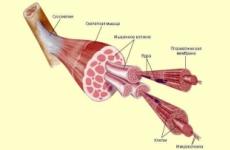Main errors when installing overlaps and roofs. Repair of the old roof from the plates on the workshop to make a holm roof and not mistaken
Semenovich, I did not find a response to the internet for such a question. Sabashka. On the workshop from the railway, the total area of \u200b\u200b80 is 24 meters, the slope is about 5 degrees, filled with bitumen. It is proposed right on it to bind the rafter with the wire to the slabs of the overlap. But how, I can not imagine. It is clear that you need to drill holes in the stoves, but how to cover the wire into one hole and again pull it into the neighboring to tie the rafylic? From the bottom it is impossible, there is nothing to go. Maybe what other real and easy way to fasten the rafter is, please advise. It is also assumed to insulation between the rafted.
Alexey, Vologda.
Hi, Alexey from Vologda!
A very non-standard question How to fix wooden rafters to a shop span. Therefore, the answer to it is not visible on the Internet.
Similarly, more and more simply are again covered with rubberoid (by the rubble, glassizol, and similar things) directly along its old layers, including through the layer of the bits of the bitumen. Sometimes these old layers of roof are moving. But this, of course, is difficult. New electrical installations at all fasten the roofing material on the old, without deleting it. But they are still rare for our great and immense.
I admit that shopping spans in your way did not overlap.
Smaller squares accounted for several other variations.
At the same time, we laid wooden brows (and boards), an analogue of your rafters and fucked them to reinforced concrete plates, but somewhat different.
They took a steel corner with a shelf of about 63 - 75 millimeters, cut it with a grinder on a piece of 50 - 100 millimeters. In these trimming drilled holes on both shelves. Under the screws of the opening / 2 - 3 pieces / were done in vertical shelves (with a diameter of about 5 millimeters), and in horizontal shelves, one hole with a diameter of about 12-14 millimeters. (As an option - they took a steel sheet with a thickness of 1.5 millimeters, cut into stripes, then bent into the corner and drilled holes).
After that, cutting the corner of the vertical shelf to the surface of a wooden bar and fucked by self-draws.
And the second horizontal shelf lay on the surface of the reinforced concrete plate.
Through the hole in the bottom shelf, the corner was drilled by a perforator recess in the stove or through hole (when it accounted for opposite the cavity cell of the plate).
Then the anchor bolts were taken (you can use the anchor-wedge), inserted into the hole, drove the hammer. Then the drill with the head under the bolt wathered anchor until the stop. True, the number of anchors was decent, and they are not cheap.
Received quite normal mount. At the same time, the following features took into account.
The first - calculated an approximate step of the reinforcement, which was in the reinforced concrete slabs of the overlap, so that both the perforator in them do not fall and the anchor could be shovel.
The second - when they looked at the bottom, the appearance was not always presentable, they were visible in some places potholes on the surface of the plates (where the drill of the perforator fell into a large rubbent, part of the concrete, and it fell out.
The third - fucked not immediately rafted to the plates, but longitudinal lags. And then they put rafters on them and fucked with brackets, nails, self-drawing. So it turns out less fasteners, respectively less complexity.
All the bores were impregnated by the CSD, "Segery". So demanded the customer in accordance with the standards. Experienced customers always carry out copyright and often require the use of not colorless compositions, but with a kel. Then it can be seen - there is a coating or not it. You know, the sabers are not always scrupulous in this matter.
I can not say anything about other ways. You can, of course, decompose along the rafter, drill a hole with them with a hole and drive around on the bridge inside the workshop span, to oversee the wire and twist it into these holes. But it is somewhat difficult. Yes, and the crane may not be, but with the staircase, do not bother.
But this is all reasoning on a free topic.
And now that I personally would do in your place.
In your case, the slabs of overlapping are most likely. If memory does not change, with such spans as you, their dimensions are about 9 meters by 1.5 (or 1.8) meters. Carrier fittings in such plates is located around the perimeter. And throughout the area there is a welded grid with a large cell. Wire diameter from 3 to 5 millimeters. The stove itself has stiffeners. And the thickness fluctuates about 50 millimeters.
Opportuning plates is carried out on reinforced concrete arches-farms. The joints of the strokes on the strokes are castle or simple.
Then it is most advisable not to use lags, as we did with conventional rectangular flat reinforced concrete slabs, and to take a cutting board with a cross section of 40/150 millimeters. Putting it plafhone on the surface. "40" is more suitable here than "50", it is better bend. Laying, respectively, from the edge to its center.
Then the shell boards can be taken measuring, six-meter and position them along without any bends.
Boards-rafters are pretty pressed against the surface. That is, one end of the board is fixed, then a couple of a man from the brigade must stand on the other end of the board. It will bend and facilitate the bias of the roof. Then make fasteners of the next anchor bolt. Fasteners step - about 1.5 meters. Holes for an anchor bolts drill directly in boards for their centers. And further drilling in the plates themselves.
Anchor to drive also with a hammer, wrap a drill with a head. The screwdriver is most likely inexpedient, its power may not be enough. In order for the head anchor-bolt to fall into wood, you can progress and put a large diameter washer under it. The length of the anchors should be approximately equal to the total thickness of the board, the bitumen layer, plus the thickness of the slab plate.
On the perimeter of the roof there should be no different kind of holes to exclude, the so-called sailboat, when the riding wind enters the closed space and is able to tear the roof from its base. Extremely similar rare, but it happens.
All offered does not quite fit into the bottom, they would recommend rafters to put on the edge for greater rigidity, use the 50/150 board, to customize its surface on the slope, to apply a cutting board as a thickness of 50 millimeters as a clamp. Or remove the layers of the old rubberoid, to make a concrete screed, or even move the old slabs of overlapping and install new with a new layer of soft roof. But on such costs your customers are unlikely to go.
Once again, I repeat that you may have simple reinforced concrete plates, and maybe the slabs of the overlap, respectively, the mounting options can be different.
Focus on circumstances. Try, experiment.
As the insulation, then there will be no special problems. Eau return, Urs, Minvat, Polyfoam, all that is your heart. If you observe all the decency, then air gaps are needed, various thermal blinds, at the thin case pergamine and all ZTO according to the counterclaim. If the insulation is soft and a thickness of 50 millimeters, then nothing terrible, the "40" board will be completely passed, only to presate will need a little.
However, this is my vision. The decision to take anyway only to you.
Other questions on the topic of roofs.
Before taking the construction of the most interesting and convenient roof design, it is worth correctly evaluating - what advantages and disadvantages lie for an attractive external facade of the idea. Walm roof is no exception. It is worth noting that to make a hip roof - this is quite expensive pleasure that requires funds, knowledge and practical experience.
Features of the roof ripple
If you carefully look at the classic holm roof, it becomes clear that it was created, first of all, for two or three storey houses, for conditions with a large amount of precipitation and a changed direction of strong winds. No wonder such designs are also called Dutch or Danish. It is there that the advantages of the holm roof are obvious. But the beauty of the design sometimes makes the hollows for the sake of the appearance of the roof and the facade of the house, and not some special properties.
If you compare the sizes and costs of the material on a two-tie layout and a four-tie hip roof, the following conclusions can be drawn:
- Making two additional roof skate instead of flat frontoths favorably due to lower costs on a wooden barcass timing, but unprofitable, in terms of the flow of roofing materials;
- If you make the walls of the house from modern aerated concrete blocks or bricks from an arbolite mixture, this will reduce heating costs, but will increase the costs of amplifying the carrier buckle roof, almost 25-30%;
- Doing the roof of a hip structure is beneficial if the house is in conditions of constant strong winds and abundant precipitation. In this case, heat loss on a two-tie roof is higher by 5-10% than on the designs with hips;
- With the same consumption of materials to make a simple hip roof more expensive due to the need to pay for services of more qualified builders and specialists;
- The design with Valmami with one quality building is considered more durable and durable in comparison with dual-sheet roof schemes.
Important! The hollow roof today has become practically a classic genre in the architecture of low-rise construction of cottages and country houses.
Make a walm roof and not mistaken
The hollow roof today can look very beautiful and original. Modern development of a holm roof designs allow you to make it almost on any modern building, with a foundation or even without it. If the building does not even have a ribbon foundation base of normal depth, a hollow roof can be made by the simplest scheme - with a very small slope of the roof of the roof, a large ending of hanging rafters and a wide lip outlet. Naturally, the full attic room and the ceiling device will be impossible due to the weak stability of the house of the house. Such an approach will make it possible to make the minimal aerodynamic load from the wind, good protection of walls and foundations from rainflows, and reduce heat loss through the tops of the house. Excellent option for a small country house.

Basic Walm Roof Frame Assembly Schemes:
- Design with support only on the wall, without the use of overlapping or ceiling beams;
- The urban version of the framework of the frame allows you to increase the size of the four-page roof in height;
- The roof with a support on the beams of the house overlapping is the most commonly used option for houses with light walls with insufficient stiffness of the building box;
- The hollow roof with a support on the slab plates is the most common option in the modern construction of two and three-storey houses.
Walm roof with overlap support
In contrast to ordinary two-sheet roofs, in which the angle of inclination can be from 30 - 65 o, the hip circuits have an optimal angle of 45 o. Almost all constructions and calculations are performed, based on the specified angle of inclination of the main elements of the frame - diagonal rafters. This option ensures the maximum strength of the design.

Using the sleeve and supports on the beam overlap
Most often, such a roof is based on the bottom of the rafted on Mauerlat from a bar or a thick board, fixed to the upper end of the brick or concrete walls of the future at home. Together with the foundation of the wall form a rigid semi-folding system, able to withstand vertical and horizontal loads from the rafted. Installation of overlapping from logs, timber or boards in such schemes is necessary for the formation of a ceiling and an attic floor. The overlap itself in the holding of the roof or individual elements of the hip design does not bear.
In the weapon construction of the rafter supports, there is also a variant of the ceiling overlap, made of wooden beams. With small sizes of the house's specific overlap strength, there is enough for partially to take over the load from the skate run and rafters. If the length of the beam increases more than 5 m, the strength of such overlap to hold the roof is clearly not enough. Therefore, in the central part, the support columns or even part of the walls are built, on which the central part of the overlap timber is based on. The load from the skate run is transmitted through the vertical stand-support per powerful central bar, called Legene. Sometimes, the effort from the weight of the structure is transmitted through the litter directly to stone supports, without the participation of the ceiling overlap.
Thanks to this scheme, the redistribution of the loading load may be thinner and easier, and the pressure on the walls of the house is reduced by 30-40%.

Using the beam overlap to hold rafters
Often, in the design of the house, it is not always a decisive factor in the ability of capital walls to hold the vertical load on the weight of the roof and frame. Such a situation often occurs in the structures of the panel houses, in buildings with lightweight walls, or when used as the base material for walls with low rigidity, for example, arbolite stone.
In these cases, even partial unloading and transferring most of the pressure from the weight of the holm roof from the perimeter of the outer walls to the inner stone walls and the supports of the problem does not solve. The stiffness and strength of the main box of the building lacks for reliable retention even the holm roof, not to mention the two-tie scheme. The problem of additional stiffness can be solved if it is possible to make a special overlap of a wooden bar at the base of the roof, with a cross section of 20x20 cm or 20x15 cm. The beams are placed on top of the finished Maurolalate, with departure beyond the walls by 60-70 cm, in half a meter. The overlap from the bar must have a support for one of the inner walls.
The ends of the timber protruding beyond the walls are used to fasten the lower parts of the rafting legs, and in the central part of the ceiling, the frame is installed with supports that support the ski run and the upper part of the rafted. The main part of the design - the diagonal rafters are installed in the corners of the overlap and are connected at one point at the skate run.
Walm roofs with supports on overlapping plates
Constructions with Walm Triangles have long become a mandatory attribute of two or three-storey cottages from brick and stone, built according to classical technology with styling ceilings from reinforced concrete plates. Due to the high strength of the plates and brick walls, the problem of providing the required rigidity of the support surface under the frame is not worth it.
To retain the weight of the frame, the same scheme is used as in the consideration. Rama with vertical racks and pins, which perceives the effort from the ski beam and rafters, relies on the bed, fixed on the concrete slab.
Features of the construction of a hip roof
The design allows you to withstand any wind load, but subject to accurate compliance with the compound geometry of the four main diagonal rafters.

Accuracy of the connection and geometry rafters
All efforts can be in vain if the optimal angles of the tilt of the hollow rafters are impaired to the overlap and the corner of each other. A better option is the scheme in which the corner hollow rafters are connected to each other at an angle of 90 o.
The optimal angle between the Valm beams is an important, but insufficient condition of the robust roof frame strength. If you look at the roof frame in the profile, both planes of the hip must have an absolutely the same size and the same angle of inclination. Otherwise, the design will be overloaded to one of the sides, and this is the first step to deformation and destruction. If you look at the frame from above, you can see that when an ideal assembly, opposite angular hip rafters must be parallel.
Methods for connecting beams and rafted hip roof
Despite the efforts made on unloading part of the structure, the frame is difficult to make absolutely ideal by the location of the beams and power elements. Therefore, metal overhead plates and wooden overhead elements are used in all major power beams and rafters when fastening and fixing on the walls.

Most often, the beams and rafters at the setup stage grabbed between themselves "Circular", the easiest way to do with the help of self-tapping and clamps. After fitting the sizes of all connections, it is necessary to check the positions of the beams and rafters, then all the attachments are completely connected, it is easier to make it nails, scoring them in pairs at different angles.

The first ligaments of the diagonal valves at the skate run are fixed, and it is necessary to check the invertible from the estimated place of opposite beams. This is the most responsible and complex stage of assembling design, and it is important to make this procedure slowly and very well. The qualification of the builder of the hip roofs manifests itself at this stage, all the subsequent work is quite able to make a conventional carpenter, having a general idea of \u200b\u200bthe device of diagonal rafters and valves.

The load on the diagonal of the hollow roofs exceeds the force on the rank rafter more than one and a half times. Therefore, the configured and fixed angular horses are first brought by pink and stops. Each of the retaining elements is adjusted individually and is also attached with the enhancement of the connection. At the next stage, it is important to properly install these people and ordinary rafters, upon completion, it is necessary to make tight fastening of the rafter legs on Mauerlat or overlapping beams.
Before laying vaporizolation, it is necessary to make treatment with preservative solutions. It is easier and safer, you can use the most popular types of ticcuril on an organic solvent.
Conclusion
It is not so difficult to make a roof if there is a real specialist in the brigade, which can be entrusted with the control of the main, particularly critical places of connection of power elements. Make these works yourself, without having practical experience in the construction of Valm, it is possible, but the construction itself is spread for several months, and the cost of spoiled material will make the cost of the services of a qualified specialist.
The overlaps of different types have their own installation technology, which should be strictly observed.
The general rule - the overlap is aligned on the ceiling of the lower floor. Since it is precisely it gives the design of the house spatial rigidity, all parts of it are rigidly binding among themselves and with walls (welding, concreting, anchors).
It is not allowed to pierce the holes in the slabs that are not provided for by the project (in order not to damage the ribs and fittings in the stove), lock (trim) the slabs of the floors, as well as overload them in the process of installation over the regulatory load. The most common mistake - reducing the area of \u200b\u200boverlapping overlap on the wall (Compared to the project).
Effects.Deflection and collapse of floors, cracks in the walls and the ceiling (for example , permissible deflection for a round-standing plate with a span 6 m is 15 mm).
Elimination. If a deflection is more permissible, you should reduce the load on the stove or enhance it by the method that the specialist will indicate.
How correctly. It is necessary to strictly observe the project and instructions on the technology of mounting overlaps. If due to the error in the construction of the wall, there was a problem of insufficient Ospiration area, the specialist should develop a node for this that allows it to increase it.
Errors in the construction of the roof
Not fortified attic wall
Effects.Inclined rafters affect the attic wall in the horizontal direction, creating the stretch, due to which the wall is destroyed.
Elimination. Convert hanging rafter system into a change.
As correct . When the attic wall is erected, it is initially necessary to provide for a spherical solo system (with a plot point in the skate zone).
Steamerly mounted vapor barrier film
Effects.The foci of the penetration of steam into the insulation, which is why moisture accumulates in the undercase space. .jpg)
Elimination. Disassemble the design, inspect the rafyled, replace damaged items. Insulation must be dried or replaced.
How correctly. When installing vapor barrier, the film around the perimeter of the attic is at the walls. A special wide mounting ribbon thoroughly seal joints and places of adjacent to designs. Use nails is prohibited.
No ventilation layer in roofing "Pie"
Effects. In the insulation, moisture can accumulate, why he loses its properties.
Elimination. Disassemble the design, inspect the rafyled, eliminate damage, mounted roofing "pie" again.
How correctly. The underfloor space should be ventilated through the air gap, which is left between the insulation and the waterproofing film. Without a gap on the insulation, only a superdiffusion membrane can be laid.
With the device of bitumen and metal roofs (folded, metal), under which condensate is formed, the ventilation gap is also arranged directly under roofing. Under the sleeves, the roofs leave holes for air flow, and in the area of \u200b\u200bthe skate, the devices are mounted for its outflow.
The type of coating was changed to a more hard
Effects.The rafters are killed, as a result of which the roof is deformed, begins to flow and can collapse.
Elimination. Strengthening the rafter system.
How correctly. When the type of roof is changed, it is necessary to order a constructor engineer recalculation of the rafter system for a more massive coating.






